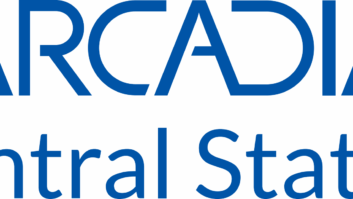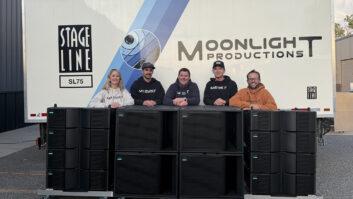
Management Perspectives: Search-engine Optimization
Dec 1, 2008 12:00 PM,
By Don Kreski
The most important step in web development that AV companies never take.

To best optimize your website for search engines, be sure to include your targeted term or terms in the title tag, meta description tag, keyword tag, headline, and body copy. Search engines cannot read photos or headlines set up as graphics, but they can read ALT tags attached to images.
You have a great website. It looks good. It works well, but it doesn’t seem to attract new business. When you type the products or services you offer into Google or Yahoo, your site is not listed in the search results. What went wrong?
“Nothing,” says Tim Grant, owner and president of lunavista communications in Chicago. You just need to take one more step: You need to market your website to the search engines.
“Some people look at a website as a business card or a brochure. It’s something they can show potential customers to build credibility, and it can be very valuable as such,” Grant says. “Other people need their website to generate leads and make sales. And they’re going to go the extra nine yards to make it do that.”
If you choose to travel that distance, you’ll need to make an additional investment to put the search engines to work for you.
THE OPTIMIZATION PROCESS
According to Grant, whose company specializes in the marketing of websites to search engines, the first thing you need to realize is that the majority of sites are not optimized. If you optimize yours for the “organic search” or free sections of Google, Yahoo, and MSN, you’re likely to gain a significant advantage over your competitors.
It’s also important to understand that there are very few tricks to the optimization trade. “The search engines are always trying to give the best, most relevant results for any query,” Grant says. “To do so, they are looking for elements that are part of any good design and are readily available to end users.”
For that reason, search engine spiders — robot programs that crawl through the Internet indexing websites — look primarily at content, and they try to rank sites higher that present relevant content in an honest and straightforward manner.
“You have to realize, however, that the spiders don’t actually understand your copy or see the pictures or animations you may include,” Grant says. “They are simply running through code, copying strings of characters, and dropping them into a database.”
Since the search engines only capture text information, the first step in optimization is to develop a list of 10 to 35 keywords and phrases that you’re going to target. These are the terms that you believe potential clients will use when they are searching for someone like you.
There are several online tools that can help, including Google’s online Keyword Tool. You simply type in the word or phrase you’re considering, and it tells you how many Google searches have been completed the previous month using that term. It also lists alternative terms and the number of searches done with each of them. Once you have a list of reasonable terms, then you need to look at the pages on your site and how they support them.
“You can’t expect to support more than two, possibly three closely related terms on an individual page,” Grant says. If your site offers no support for some important terms, you will probably need to add pages. “The more pages we have to work with, the more key phrases we can target.”
Management Perspectives: Search-engine Optimization
Dec 1, 2008 12:00 PM,
By Don Kreski
The most important step in web development that AV companies never take.

Ideally, each page will include the targeted term or terms in the title tag, meta description tag, keyword tag, headline, and depending on the length of the page, probably two or three times in the body copy. Search engines cannot read photos or any headlines set up as graphics, but they can read ALT tags attached to images. Search engines will also have trouble reading sites using exotic technologies such as Flash. The reason is that an all-Flash website has no text content to speak of.
“Google has recently announced that they are working with Adobe to find better ways to index Flash,” Grant says. “Still, search-engine optimization and Flash do not go hand in hand.” If you want to include Flash animations, consider mixing them into an HTML site rather than building your entire site with Flash.
Some experts recommend using the keyword in the page’s address, or URL. Grant agrees that this can be valuable, but he warns clients not to rename existing pages.
“Web pages gain ranking over time,” he says. “When you change the names, those pages start at the very bottom as though they were brand-new in the eyes of the search engines.”
He also warns against trying to spam search engines by using a term over and over on a page or including hidden text intended for search engines but not users. “It’s generally very easy to detect any kind of trickery,” he says. “And the danger is that you may end up not with a low ranking, but no ranking at all for your entire site.”
Building an optimized website is a lot like building an AV system: The best approach is to get an expert involved early.
“Still, 70 percent to 80 percent of our clients come to us post development,” Grant says. “It’s a little more expensive, because we’ll hand them a list of changes for their developer, but we can work very effectively this way.”
If you’re optimizing an existing site, you will most likely change metatags and rewrite body copy, but leave graphics intact. Grant also looks at the cleanliness of the code. “The search engines will factor in errors in programming, even spelling errors,” he says. “The thinking is that a site with obvious errors is not a relevant site.”
Related Links

Not everyone who effectively markets to search engines manages to optimize his or her website. “We have been doing pay-per-click advertising for about three years now, and it’s grown to be our number-one marketing tool,” says Martin Phillips, president of Austin, Texas-based Wireless Computing…

Management Perspectives: Link Management
You’ve optimized your new website. You’ve identified the keywords potential customers are likely to use in searching for someone like you. You have made…

Management Perspectives: Getting Seen and Heard
Why are case histories so useful, and so widely used, in technical industries like ours? They are useful because they give print and online readers a…
Spiders don’t always index whole pages. Especially with very long pages, they may move on before they get to the end of the code. Therefore, Grant suggests that you place the most important elements close to top of the source code, minimize extraneous coding, and move certain types of code to the bottom of the page or even off page, if possible.
Search engines also consider how often a site is updated, thinking sites that are seldom touched are less likely to contain relevant information. Then, too, they will consider the position of individual pages within the hierarchy of the website, giving pages with direct links from the home page and crosslinks from other pages better rankings. So your navigation system is also important, and you may need to adjust your menus and internal links to reflect the importance of the keywords found on each page.
There is a limit, however, as to how far you can take this process.
“You have to remember that it’s the users of your website who are ultimately going to pay the bills,” Grant says. “There needs to be a careful balance between making the site intuitive for the search engines and intuitive for your clients.”
OFF-SITE FACTORS
Optimizing your website is the first step, but not the only step in marketing to the search engines.
“The search engines basically travel the Internet following links,” Grant says. “The more often they are linked to your website, the more often you will be indexed and the more credible your site will be in their eyes.”
Asking others, or paying others, to link to your site is very important and a topic onto itself. We will deal with it in an upcoming Management Perspectives column. After that, we’ll look at pay-per-click advertising, which offers an addition to, or an alternative for, the optimization process.
Don Kreski is a marketing consultant who works exclusively in the AV industry. You can reach him at www.kreski.com/contact.html.










